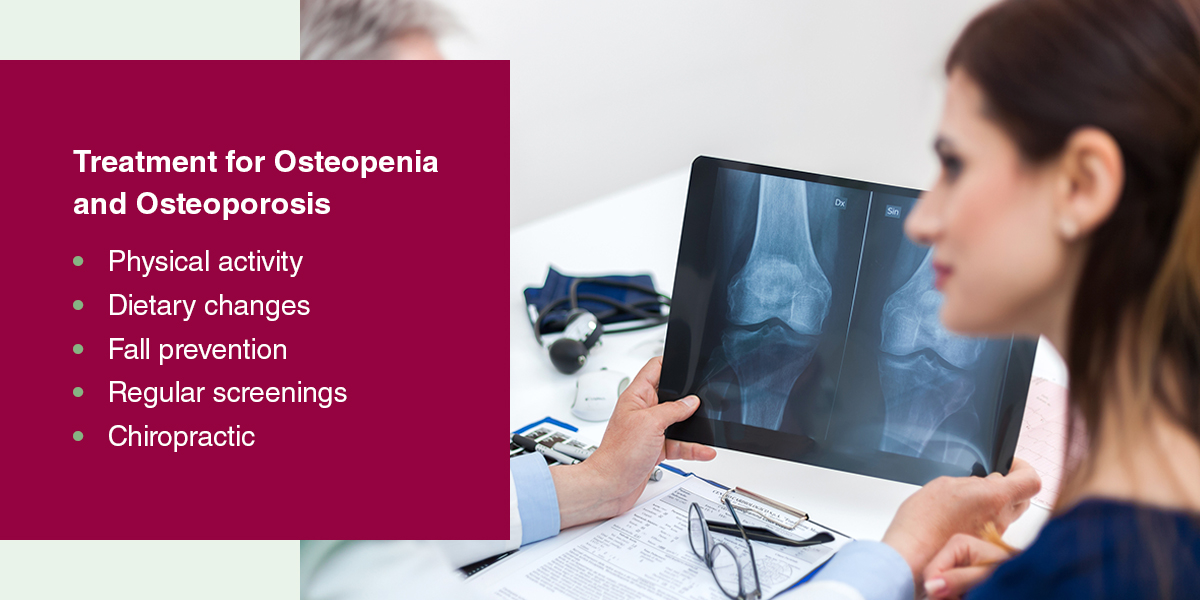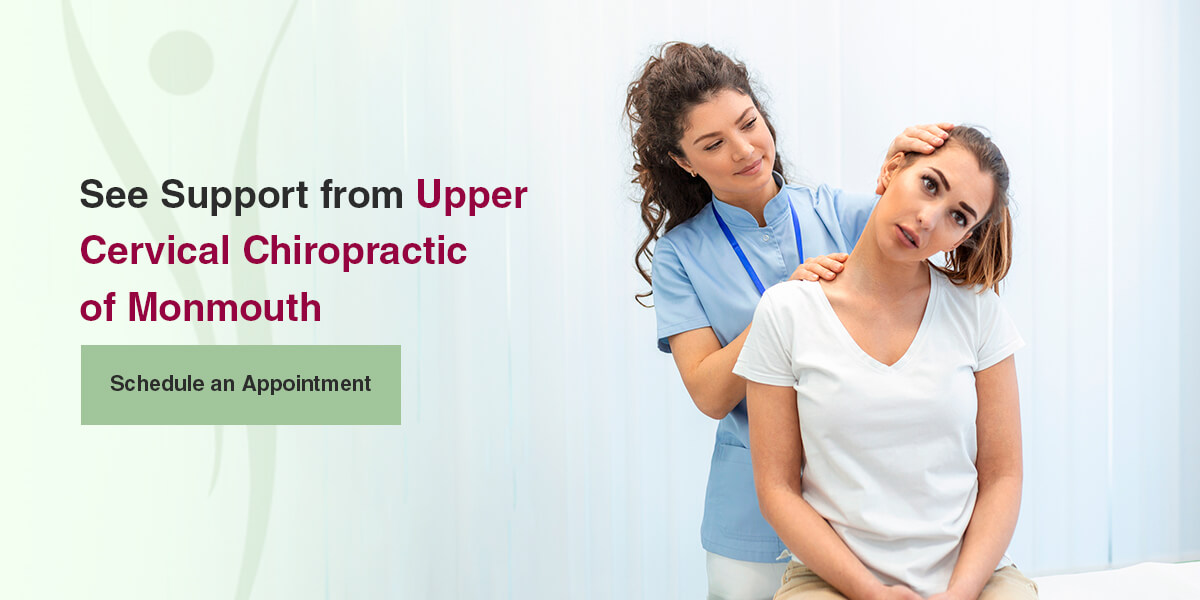Bone Health 101 — Osteopenia vs. Osteoporosis
Bone Health 101 — Osteopenia vs. Osteoporosis

We don’t typically consider our bone health until something goes wrong. Strong, healthy bones support our bodies and help us stay active and mobile. Bone density declines with age, meaning we should prioritize bone health even more as we get older. Taking proactive steps — such as eating a balanced diet and performing weight-bearing exercises — can help maintain bone strength and may prevent some conditions.
Osteopenia and osteoporosis impact bone density and the body’s ability to support itself. The risk of fractures and other bone-related concerns increases as that density lessens. This can lead to chronic pain, reduced mobility and a higher likelihood of injury. You can manage these conditions and symptoms with help from a health care provider.
Table of Contents
What’s the Difference Between Osteoporosis and Osteopenia?
Osteopenia and osteoporosis are related — yet distinct — bone density conditions that involve reduced bone density. They differ in severity and potential consequences.
Osteopenia is often thought of as a precursor to osteoporosis — it’s when bone density is lower than it should be but is not severe enough to be labeled as osteoporosis. Treat it as a warning that your bone health needs attention by addressing it as soon as possible to prevent progression.
Osteoporosis is more severe. It’s when one has weak and brittle bones as a result of decreased bone density. Someone with this condition is susceptible to fractures, especially in the hips, spine and wrists. Afflicted individuals may experience mobility loss and diminished quality of life.
Symptoms of Osteopenia and Osteoporosis
Osteopenia is not immediately recognizable in its early stages. Individuals are often unaware of the condition until it progresses or causes a fracture.
Individuals with osteoporosis are at a higher risk of fractures, especially in the hip, spine and wrist. The early stages of osteoporosis may show no noticeable symptoms. Some common signs you might see as the condition progresses include:
- A gradual loss of height from compression fractures.
- Chronic back pain caused by fractured or collapsing vertebrae.
- A rounded, stooped posture — known as dowager’s hump or kyphosis — which is caused by multiple spine fractures.
- Bone fractures from something like bumping into an object the wrong way or having a minor fall.
Health care providers typically diagnose these conditions with a bone densitometry or Dual-Energy X-ray Absorptiometry (DEXA) scan. DEXA scans measure the mineral density in specific bones — mainly calcium — usually in the spine, hip or forearm. Results are reported as T-scores and Z-scores that help assess bone density and compare it to the average bone density of healthy individuals of the same age and sex.
Your doctor can also treat your results as a baseline for future DEXA scans to note any changes, like worsening symptoms or improved density. They will let you know how many times you should expect a DEXA scan and when you should return for another.
Causes of Osteopenia and Osteoporosis
Some factors that could cause osteoporosis and osteopenia to develop include:
- Being an older adult: Bone conditions are more likely as we age due to the decrease in minerals like calcium, which strengthen bones and support skeletal functions.
- Diet: Vitamin D and calcium are essential parts of bone strength — without adequate levels, your chances of developing a bone-related condition increase. However, additional minerals are equally necessary to consume throught diet or supplementation.
- General inactivity: A lack of regular activity, especially weight-bearing movements and exercises, leaves your bones more susceptible to weakness.
- Hormonal imbalances: Imbalances like low estrogen levels in women during and after menopause or low testosterone levels in men can contribute to density loss.
- Genetics: A family history of osteoporosis or fractures may increase the likelihood of developing those conditions yourself.
Untreated osteopenia also increases an individual’s chance of developing osteoporosis later.
Treatment for Osteopenia and Osteoporosis

Osteoporosis can lead to broken bones, such as a broken hip, if left untreated. These types of breaks typically require surgery or similar intervention. Your doctor can provide personalized guidance if you’re concerned about your bone health. They’ll recommend the right care management to support your journey to fewer symptoms.
Treatment for osteoporosis and osteopenia is similar — it aims to slow bone loss, prevent fractures and improve low bone density. Your provider may recommend one or more of the following lifestyle changes:
- Physical activity: Weight-bearing and resistance exercises, like walking and aerobics, help fortify the body against bone loss. Try to incorporate regular movement into your daily routine.
- Dietary changes and Supplements: You need enough calcium and vitamin D to maintain bone health. Calcium is abundant in several food groups, like dairy, leafy greens and fish. Fatty fish — like salmon, tuna and mackerel — are also rich in vitamin D. Your doctor may recommend supplements if your diet doesn’t provide enough nutrients. A dietitian can also help you create a food plan full of nutrient-dense food that tastes good and fits your lifestyle. You should also consider quitting smoking and limiting alcohol intake.
- Microcrystalline hydroxyapatite concentrate (MCHC) is a highly absorbable crystalline compound that provides everything found in healthy bones and is backed by more than 30 years of research. MCHC contains naturally occurring calcium, phosphorus, and trace amounts of other minerals, bone growth factors, collagen and other vital bone proteins. Selective kinase response modulators (SKRMs) in the form of RIAA, berberine, and vitamins D and K to help nutritionally support healthy bone remodeling during the aging process. *Check with your physyician prior to starting any new supplementation.
- Fall prevention: Even minor falls can cause fractures. Taking steps to prevent falls — such as removing tripping hazards at home, using assistive devices and improving balance through exercises — can reduce the risk of fractures. Chiropractic care can provide various techniques, methods and exercises that may assist with fall prevention.
- Regular screenings: Regular bone density screenings can monitor your condition’s progress, detect any changes, identify fractures and evaluate how well your care management plan is working. You should also keep up with regular doctor visits to support your overall health and reduce the chance of other conditions that may worsen osteoporosis or osteopenia.
- Chiropractic: A Chiropractor will recommend specific nutrition recommendations, exercises, static and dynamic techniques to help improve your condition and quality of life. Chiropractic care can provide various techniques, methods and exercises that may assist with fall prevention. Your doctor can guide you to the right specialist if necessary. In this video, Dr. Larry Arbeitman shares some of his thoughts regarding optimal Bone Health.
See Support from Upper Cervical Chiropractic of Monmouth
While both conditions signal a loss of bone density, osteopenia serves as a warning sign, while osteoporosis represents a more advanced and severe stage of bone loss. The good news is that you can manage both conditions with the right approach and support.
The Upper Cervical Chiropractic of Monmouth, LLC. team is ready to help on your journey to better bone health. Our gentle correction technique focuses on the first vertebra in the neck and is designed to restore balance to the body, spine and nervous system. With five skilled doctors and over 120 years of combined experience, you can trust in our expertise and commitment to your well-being.
Upper Cervical Chiropractic of Monmouth, LLC, is dedicated to providing you with personalized care and support whether you’re concerned about developing a condition or just want to prioritize your bone health. Contact us today to start building your care plan.





